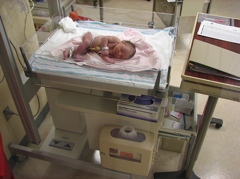Consumer Reports Investigates: Dangerous Infections More Likely In Pediatric ICUs

(tjean314)
Some shocking news from our serious siblings at Consumer Reports. They analyzed 92 pediatric ICUs across the country in a new investigation, and found that only five percent of those earned their highest Rating for preventing dangerous and sometimes deadly hospital-acquired central-line bloodstream infections.
While the report does point out that in the last 10 years, awareness of hospital-acquired infections has grown and helped to lower infection rates for both adults and pediatric ICUs, rates are still too high. It’s hard to come by information on those rates, as numbers on bloodstream infection rates are only publicly available for half of the 423 PICUs nationwide.
The two PICUs with Consumer Reports’ lowest rating are the University of Virginia Medical Center in Charlottesville and the Loyola University Medical Center in Maywood, Illinois. That means they reported central-line bloodstream infection rates more than twice as high as the national average.
Consumer Reports found that most hospitals could do a better job at preventing infections, whether they are large institutions or smaller.
“Every ICU, whether it’s a pediatric or adult unit, should be able to eliminate or at least dramatically reduce the number of hospital infections,” said John Santa. M.D., M.P.H, director of the Consumer Reports Health Ratings Center. “The procedures to eliminate infections are simple, low-tech, and low-cost, relying for the most part on a change of mindset where the hospital staff comes to believe that an infection is never an acceptable outcome.”
Check out ConsumerReports.org for more information on the investigation.
Many pediatric ICUs have high infection rates [Consumer Reports]
Want more consumer news? Visit our parent organization, Consumer Reports, for the latest on scams, recalls, and other consumer issues.

